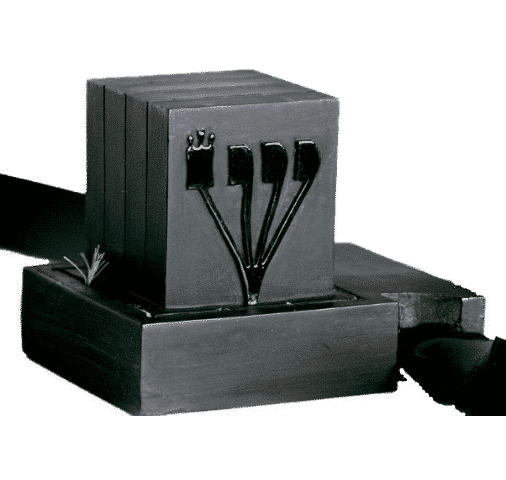Order of the Scrolls According to the Rishonim
In Jewish tradition, there is a divergence of opinions among the medieval scholars known as Rishonim regarding the arrangement of the scrolls within the tefillin boxes. Two major opinions stand out: those of Rashi and Rabbeinu Tam.

According to Rashi (and also Rambam), the order of the scrolls is as follows:
Kadesh Li,
Vehaya Ki Yeviacha,
Shema Yisrael,
Vehaya Im Shamoa.
In contrast, Rabbeinu Tam (along with other Rishonim and the Jerusalem Talmud) advocates a different order:
Kadesh Li,
Vehaya Ki Yeviacha,
Vehaya Im Shamoa,
Shema Yisrael.
Despite this divergence, the Shulchan Aruch (Chapter 34, Section 1) notes that the common custom worldwide is to follow the opinion of Rashi and Rambam. However, the Shulchan Aruch adds (Section 2) that a person who fears G-d should fulfill both opinions by wearing both types of tefillin. Yet, Section 3 specifies that only a man known for his piety should also wear the tefillin of Rabbeinu Tam.
Contemporary Scholars’ Views on Rabbeinu Tam’s Tefillin
Today, Rabbi Ovadia Yosef zatzal (in Halikhot Olam, page 23) emphasizes that since many people, even those who are not particularly learned, wear Rabbeinu Tam’s tefillin, everyone should consider this opinion, especially since according to Rabbeinu Tam and other Jewish sages, those who only wear Rashi’s tefillin do not fully fulfill the mitzvah.

Given the paramount importance of this mitzvah, Rabbi Ovadia Yosef zatzal strongly recommends that everyone should wear both types of tefillin. However, it is customary among Sephardim that an unmarried man does not wear Rabbeinu Tam’s tefillin unless he is certain that he will not have any distracting thoughts while wearing them.
Rabbeinu Ha-Ari, cited by the Ben Ish Hai (Parashat Vayera, Section 21), reveals in the name of Elijah the Prophet that both types of tefillin are valid and necessary, as they correspond to different mystical realities. To properly achieve the tikun (rectification) of our soul each morning, it is recommended to recite the Shema Yisrael with both pairs of tefillin, ideally wearing them simultaneously (which requires miniature tefillin).
If one decides not to wear them simultaneously, that is, by first wearing Rashi’s tefillin during prayer and then Rabbeinu Tam’s tefillin afterward, the blessing should only be recited on Rashi’s tefillin. Rabbeinu Ha-Ari explains that Rabbeinu Tam’s tefillin possess such a high level of sanctity that the blessing is no longer applicable.
Rabbi Ovadia Yosef zatzal notes that ideally, both types of tefillin should be worn simultaneously. However, due to practical constraints – such as the need for kosher miniature tefillin, the size of the areas on the body where tefillin are placed, and the difficulty in finding adequate miniature tefillin – he recommends that it is preferable to wear Rashi’s tefillin first for prayer, and then Rabbeinu Tam’s tefillin afterward, while repeating the Shema Yisrael and Vehaya Im Shamoa passages.
On the other hand, Rabbi Ben Zion Abba Shaul zatzal advises wearing both pairs of tefillin simultaneously, as recommended by Rabbeinu Ha-Ari.

The Shulchan Aruch (Chapter 34, Section 2) teaches that when wearing both pairs of tefillin (whether simultaneously or separately), one should have the intention of fulfilling the obligation according to all possible opinions by declaring:
“I intend to fulfill the obligation with Rashi’s tefillin if they are the true tefillin according to the truth, and in that case, Rabbeinu Tam’s tefillin will be considered as mere leather straps. Or I intend to fulfill the obligation with Rabbeinu Tam’s tefillin if they are the true tefillin according to Halacha, and in that case, Rashi’s tefillin will be considered as mere leather straps. Or if both are true and should be worn simultaneously, I intend to fulfill the obligation with both at the same time.”


